Introduction
In today’s fast-paced world, many of us spend a significant portion of our day sitting or hunching over computers and mobile devices. Unfortunately, this sedentary lifestyle can have a negative impact on our posture, leading to a range of health problems, including back pain, stiffness, and muscle imbalances.
Fortunately, there are many Posture-improving Back Exercises that can help strengthen the muscles of the back, improve alignment, and promote better posture. Regularly incorporating these exercises into your daily routine can have many benefits, including reducing the risk of back pain and injury, improving balance and coordination, and boosting energy levels.
In addition to strengthening the muscles of the back, Posture-improving Back Exercises can also help engage the core, hips, and legs, leading to improved overall strength and flexibility. Moreover, these exercises can be performed virtually anywhere without expensive equipment or gym memberships.
In this article, we will discuss the benefits of Posture-improving Back Exercises and provide examples of effective exercises that you can incorporate into your daily routine. By regularly performing these exercises, you can take an active role in improving your posture, reducing the risk of back pain and injury, and promoting overall health and well-being.
Importance of Back Strengthening Exercises
Back strengthening exercises are crucial for maintaining good posture and reducing the risk of back pain and injury. Poor posture is a common problem caused by factors such as prolonged sitting, standing or lifting heavy weights without proper form. This can cause muscular imbalances and weak back muscles, leading to a slouched posture, and even chronic back pain.
Posture-improving Back Exercise can help correct these imbalances, build strength and stability in the back muscles, and improve posture. Strengthening the muscles in the back, especially the upper back and core muscles, helps maintain proper spinal alignment, which reduces pressure on the lower back and promotes good posture.
Back-strengthening exercises can also improve athletic performance and reduce the risk of sports-related injuries. Many sports and physical activities require a strong and stable back, making it essential to include exercises that target the back muscles in your workout routine.
Overall, incorporating Posture-improving Back Exercise into your fitness regimen is essential for maintaining good posture, reducing the risk of back pain and injury, and improving overall health and well-being
Top Posture-improving Back Exercises
Improving your posture can have many benefits, such as reducing pain and discomfort, improving breathing, and boosting your confidence. Here are some top posture-improving back exercises:
Plank
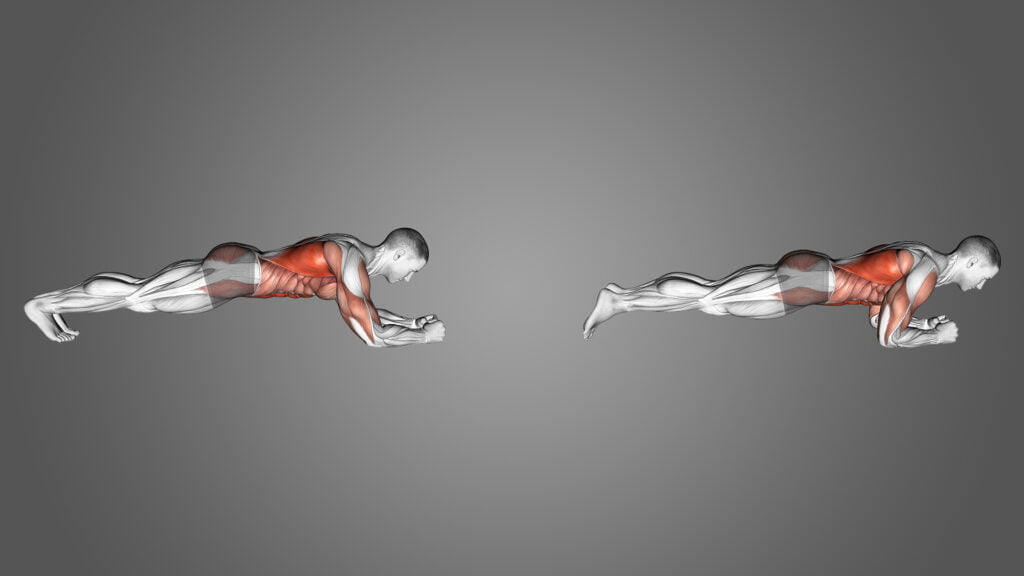
This exercise involves holding a push-up position, with your arms extended straight and your body in a straight line from head to heels. It engages your core, shoulders, and lower back muscles, helping to improve overall posture.
- Step-by-step instructions:
- Start in a push-up position with your arms extended straight.
- Keep your body in a straight line from head to heels.
- Engage your core, shoulders, and lower back muscles.
- Hold for 30 seconds to 1 minute.
- Tips for proper form:
- Keep your elbows directly under your shoulders.
- Engage your glutes to keep your hips level.
- Keep your neck in a neutral position.
- Variations for different skill levels:
- Beginner: Start on your knees instead of your toes.
- Intermediate: Add side plank variations to engage obliques.
- Advanced: Add leg lifts or arm lifts for an extra challenge.
Bird dog
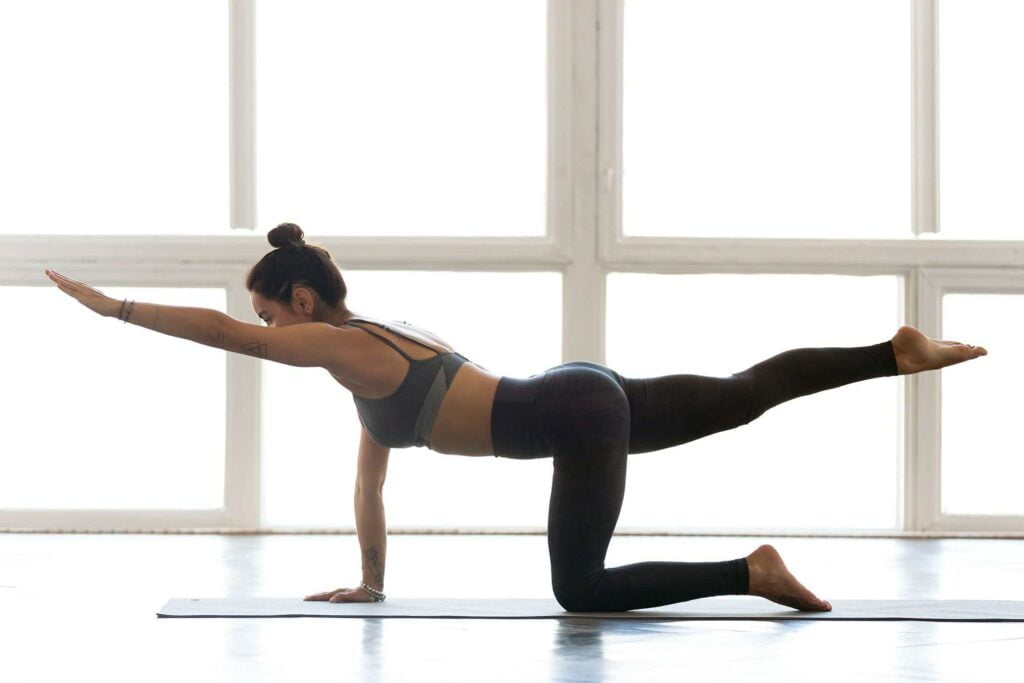
This exercise involves extending opposite arms and legs while on your hands and knees, engaging your core and lower back muscles to maintain balance and stability.
- Step-by-step instructions:
- Start on your hands and knees with your wrists under your shoulders and your knees under your hips.
- Extend your right arm and left leg, keeping them parallel to the ground.
- Hold for a few seconds, engaging your core and lower back muscles.
- Return to the starting position and repeat on the other side.
- Tips for proper form:
- Keep your spine in a neutral position.
- Engage your core muscles to prevent your lower back from sagging.
- Variations for different skill levels:
- Beginner: Start by lifting just your arm or leg, then progress to lifting both.
- Intermediate: Add a resistance band for an extra challenge.
- Advanced: Add a push-up or a side plank to engage multiple muscle groups.
Superman

This exercise involves lying face down and lifting your arms and legs off the ground, engaging your lower back muscles to maintain proper form.
- Step-by-step instructions:
- Lie face down on the ground with your arms extended in front of you and your legs straight.
- Lift your arms, chest, and legs off the ground at the same time.
- Hold for a few seconds, engaging your lower back muscles.
- Return to the starting position and repeat.
- Tips for proper form:
- Keep your neck in a neutral position.
- Engage your glutes to help lift your legs off the ground.
- Variations for different skill levels:
- Beginner: Lift just your arms or legs first, then progress to lifting both.
- Intermediate: Hold a weight in your hands for an extra challenge.
- Advanced: Lift your arms, chest, and legs off the ground and hold for an extended period of time.
Bridge
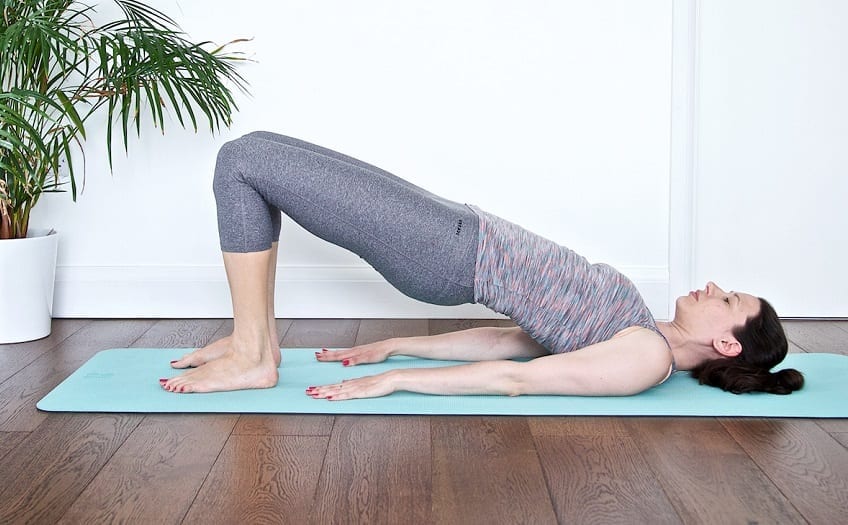
This exercise involves lying on your back with your knees bent and feet flat on the ground, and lifting your hips up towards the ceiling, engaging your glutes and lower back muscles.
- Step-by-step instructions:
- Lie on your back with your knees bent and feet flat on the ground.
- Lift your hips up towards the ceiling, engaging your glutes and lower back muscles.
- Hold for a few seconds, then lower your hips back down to the ground.
- Tips for proper form:
- Keep your feet hip-width apart.
- Engage your core muscles to prevent your lower back from arching too much.
- Variations for different skill levels:
- Beginner: Hold the bridge position for a shorter period of time.
- Intermediate: Add a resistance band around your thighs for an extra challenge.
- Advanced: Lift one leg off the ground and hold the position for an extended period of time, then switch sides.
Wall angels
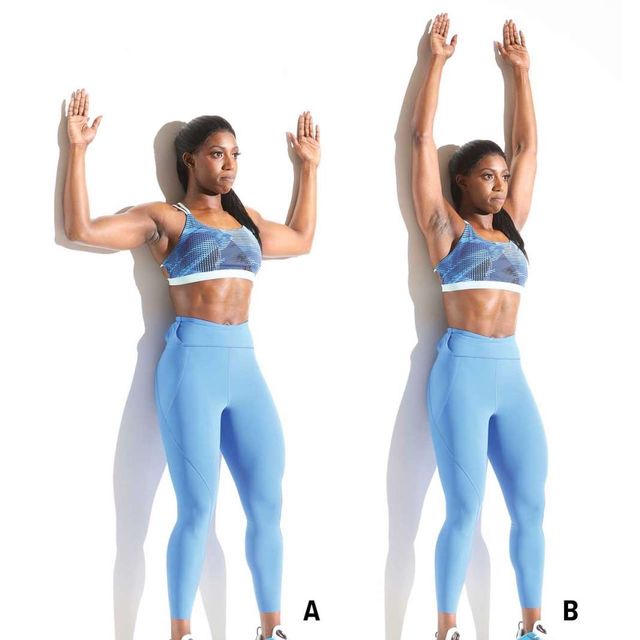
This exercise involves standing with your back against a wall and slowly raising and lowering your arms to engage your shoulder blades and improve posture.
- Step-by-step instructions:
- Stand with your back against a wall and your feet a few inches away from the wall.
- Bring your arms up to shoulder height with your elbows bent and your palms facing forward.
- Slowly slide your arms up the wall until they are straight overhead, keeping your elbows and wrists in contact with the wall.
- Lower your arms back down to shoulder height and repeat the movement.
- Tips for proper form:
- Keep your entire back and head in contact with the wall throughout the exercise.
- Engage your core muscles to prevent your lower back from arching.
- Variations for different skill levels:
- Beginner: Start with a smaller range of motion and focus on keeping your elbows and wrists in contact with the wall.
- Intermediate: Hold a light weight in each hand for added resistance.
- Advanced: Lift one leg off the ground and hold the pose for a few seconds, then repeat on the other leg.
Cat-cow stretch

This exercise involves getting on your hands and knees and alternating between arching your back upwards and rounding your back downwards, engaging your core and back muscles to improve flexibility and posture.
- Step-by-step instructions:
- Start on your hands and knees with your wrists under your shoulders and your knees under your hips.
- Arch your back towards the ceiling and tuck your chin towards your chest (the “cat” position).
- Hold for a few seconds, then release and lower your back towards the ground while lifting your head and tailbone towards the ceiling (the “cow” position).
- Repeat the movement slowly, alternating between the cat and cow positions.
- Tips for proper form:
- Keep your movements slow and controlled.
- Engage your core muscles to prevent your lower back from sagging.
- Variations for different skill levels:
- Beginner: Focus on the movement between the cat and cow positions, without going too deep into the stretch.
- Intermediate: Add a spinal twist to the cow position, reaching one arm up towards the ceiling and twisting towards that side.
- Advanced: Add a leg lift to the cat position, lifting one leg off the ground and holding it for a few seconds.
Child’s pose
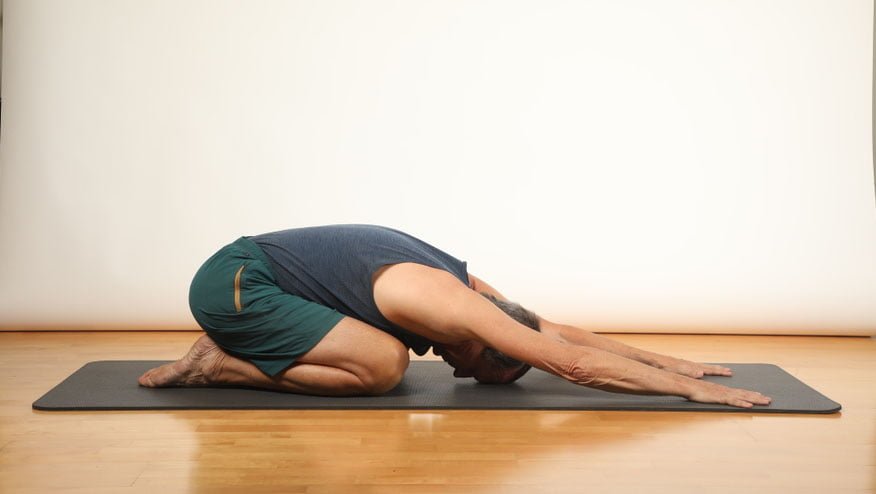
This exercise involves kneeling and leaning forward with your arms extended in front of you, stretching your back and engaging your core muscles to improve posture.
- Step-by-step instructions:
- Start on your hands and knees with your wrists under your shoulders and your knees under your hips.
- Sit back on your heels and reach your arms out in front of you, stretching your spine.
- Hold for a few deep breaths, relaxing your neck and shoulders.
- Tips for proper form:
- Keep your knees together or slightly apart, whichever feels more comfortable.
- Focus on relaxing your entire body, especially your neck and shoulders.
- Variations for different skill levels:
- Beginner: Keep your arms closer to your body, or prop your forehead up on a block or pillow.
- Intermediate: Add a side stretch by walking your hands to one side and holding the pose for a few deep breaths, then repeating on the other side.
- Advanced: Add a twist by bringing one hand to the opposite knee and twisting towards that side.
Cobra pose

This exercise involves lying face down and pushing up with your arms to lift your chest off the ground, engaging your lower back and shoulder muscles to improve posture.
- Step-by-step instructions:
- Lie on your stomach with your hands under your shoulders and your elbows close to your body.
- Press down into your hands and lift your chest off the ground, keeping your elbows close to your body.
- Hold for a few deep breaths, engaging your lower back muscles.
- Tips for proper form:
- Keep your neck in a neutral position.
- Use your core muscles to support your lower back.
- Variations for different skill levels:
- Beginner: Keep your hands closer to your body and only lift your chest a few inches off the ground.
- Intermediate: Add a side stretch by reaching one arm up towards the ceiling and twisting towards that side, then repeating on the other side.
- Advanced: Lift your legs off the ground at the same time as your chest, holding the pose for an extended period of time.
Downward-facing dog

This exercise involves starting on your hands and knees and pushing up with your arms to lift your hips up and back, engaging your core and back muscles to improve posture.
- Step-by-step instructions:
- Start on your hands and knees with your wrists under your shoulders and your knees under your hips.
- Lift your hips up towards the ceiling, straightening your arms and legs to form an inverted “V” shape.
- Hold for a few deep breaths, stretching your spine and hamstrings.
- Tips for proper form:
- Keep your hands shoulder-width apart and your feet hip-width apart.
- Press your heels toward the ground, but don’t worry if they don’t touch.
- Variations for different skill levels:
- Beginner: Keep your knees slightly bent and focus on stretching your spine.
- Intermediate: Walk your hands forward and hold the pose for an extended period of time, working towards straightening your legs.
- Advanced: Lift one leg off the ground and hold the pose for a few seconds, then repeat on the other leg. Or, move into a one-legged downward-facing dog by bending one knee and lifting the other leg off the ground, extending it straight behind you.
Common Causes of Poor Posture and How to Fix Them
Poor posture can be caused by a variety of factors, including:
- Prolonged sitting: Spending long periods of time sitting, especially with poor posture, can lead to weak back muscles and tight hip flexors, which can contribute to poor posture.
- Lack of exercise: A sedentary lifestyle and lack of exercise can weaken the back muscles and contribute to poor posture.
- Improper lifting technique: Lifting heavy objects with improper technique can strain the back muscles and contribute to poor posture.
- Poor ergonomics: Working in an environment that is not ergonomically designed can contribute to poor posture, as it can lead to awkward positions and unnecessary strain on the back muscles.
To fix poor posture, it is important to incorporate posture-improving back exercises into your routine. These exercises can help strengthen the back muscles, improve flexibility, and correct postural imbalances. Examples of effective posture-improving back exercises include the plank, bird dog, and superman.
In addition to exercise, it’s important to be mindful of your posture throughout the day. You can do this by taking frequent standing breaks, adjusting your workspace ergonomics, and using tools like lumbar support pillows or posture correctors.
Back Workouts on Cable Machine
By addressing the root causes of poor posture and incorporating posture-improving back exercises into your routine, you can improve your posture and reduce your risk of back pain and injury.
Role of Posture in Sports Performance
Posture plays a critical role in sports performance. Proper posture can help athletes maintain optimal alignment, which can increase their efficiency of movement and reduce the risk of injury. One way to improve posture for sports performance is to incorporate Posture-improving Back Exercises into an athlete’s training routine.
These exercises can help strengthen the muscles that support the spine, improve flexibility, and reduce muscle imbalances that can lead to poor posture. In addition to exercises, athletes can also benefit from working with a coach or trainer who can provide guidance on proper technique and alignment during sports-specific movements. By improving posture, athletes can enhance their performance and reduce the risk of injury, making Posture-improving Back Exercises an essential part of any training regimen.
Benefits of Posture-Improving Back Exercises for Older Adults
Posture-improving back exercises can be highly beneficial for older adults. Here are a few benefits:
- Improved Balance: As we age, our balance can deteriorate, increasing the risk of falls and injuries. Posture-improving back exercises can help improve balance by strengthening the muscles in the back, which are crucial for maintaining proper posture and stability.
- Reduced Risk of Back Pain: Back pain is a common problem among older adults, and poor posture can contribute to this. By improving posture through targeted back exercises, older adults can reduce the risk of back pain and related issues.
- Increased Mobility and Flexibility: Regular posture-improving back exercises can also increase mobility and flexibility, making it easier for older adults to perform daily activities and maintain an active lifestyle.
- Enhanced Respiratory Function: Poor posture can affect breathing and lung capacity, particularly in older adults. By improving posture through back exercises, older adults can improve respiratory function and overall lung health.
- Improved Quality of Life: By improving balance, reducing back pain, increasing mobility and flexibility, and enhancing respiratory function, posture-improving back exercises can ultimately lead to an improved quality of life for older adults.
Some effective Posture-improving Back Exercises for older adults include the plank, bird dog, cobra pose, wall angels, and bridge pose. It’s always a good idea for older adults to consult with a healthcare professional before starting any new exercise program.
The Connection Between Posture and Mental Health
There is a strong connection between posture and mental health. Studies have shown that poor posture can have negative effects on mental health, including increased stress, anxiety, and depression. On the other hand, maintaining good posture through activities such as Posture-improving Back Exercises can have a positive impact on mental health.
One reason for this connection is that poor posture can lead to physical discomfort and pain, which can contribute to negative emotions and decreased mental well-being. Additionally, when we slouch or hunch over, we tend to breathe more shallowly, which can trigger the body’s stress response and lead to feelings of anxiety or tension.
Conversely, maintaining good posture can help us feel more confident, energized, and focused. Posture-improving Back Exercises can strengthen the muscles that support the spine, improving our ability to maintain good posture throughout the day. Additionally, these exercises can help release tension and promote relaxation, which can reduce stress and improve mental well-being.
So, by incorporating Posture-improving Back Exercises into our daily routine and paying attention to our posture throughout the day, we can support both our physical and mental health.
Additional Tips for Improving Posture
Here are some additional tips for improving posture that incorporate Posture-improving Back Exercises:
- Take Breaks: If you sit for long periods of time, take breaks every hour to stretch and move around. Incorporate a Posture-improving Back Exercise like a plank or wall angels during your breaks to engage your core and back muscles.
- Improve Your Workspace: Make sure your workspace is ergonomically friendly. Adjust the height of your chair, computer monitor, and desk to promote proper posture. Consider using a lumbar support pillow to maintain the natural curve of your spine while sitting.
- Strengthen Your Core: A strong core is essential for good posture. Incorporate Posture-improving Back Exercises like the bird dog or Superman to engage your core and back muscles.
- Wear Supportive Shoes: Wearing supportive shoes can help promote good posture by providing a stable base for your feet. Avoid wearing high heels for extended periods of time as they can place added strain on your back muscles.
- Practice Good Sleep Habits: Good posture starts with good sleep. Use a supportive pillow and mattress that promote proper alignment of your spine. Stretch before bed and incorporate a Posture-improving Back Exercise like the child’s pose to help relax and lengthen your back muscles.
- Practice Mindful Movement: Incorporating mindfulness practices like yoga or Pilates can help you become more aware of your posture and movements. These practices often incorporate Posture-improving Back Exercises like the cobra pose or downward-facing dog.
- Engage in Cardiovascular Exercise: Cardiovascular exercise like running or cycling can help strengthen your back muscles and improve your posture. Consider incorporating Posture-improving Back Exercises like the bridge or plank as part of your warm-up routine.
- Avoid Slouching: Slouching places added stress on your back muscles and can lead to poor posture. Practice sitting up straight and engaging your core muscles throughout the day. Incorporate Posture-improving Back Exercises like the wall angels or cat-cow stretch to promote good posture.
- Focus on Your Breathing: Deep breathing exercises can help you relax and engage your core muscles, which are essential for good posture. Try incorporating a Posture-improving Back Exercise like the Superman pose while practicing deep breathing to engage your core and back muscles.
- Be Consistent: Consistency is key when it comes to improving posture. Incorporate Posture-improving Back Exercises into your daily routine and make small adjustments throughout the day to promote good posture. With time and practice, good posture will become a natural habit.
I hope these additional tips incorporating Posture-improving Back Exercises help you improve your posture and promote overall health and well-being.
Conclusion
In conclusion, good posture is essential for maintaining a healthy and pain-free back. Incorporating Posture-improving Back Exercises into your daily routine can help strengthen the muscles that support your spine and improve your overall posture.
By regularly practicing these exercises and implementing additional posture-improving strategies, such as adjusting your workspace ergonomics and taking standing breaks throughout the day, you can significantly reduce your risk of back pain and injury. So why not start today? Try incorporating some of these Posture-improving Back Exercises into your fitness routine and experience the benefits of improved posture and a healthier, happier back.

Good day, and welcome to Fitthour. My name is Shubham Vijay, and I am a certified personal trainer and nutrition coach with 6 years of experience in the fitness industry. At Fitthour, we specialize in types of training, such as strength training, cardio, or HIIT, and our mission is to help clients achieve their fitness goals and improve their overall health.




